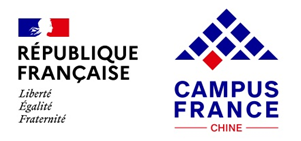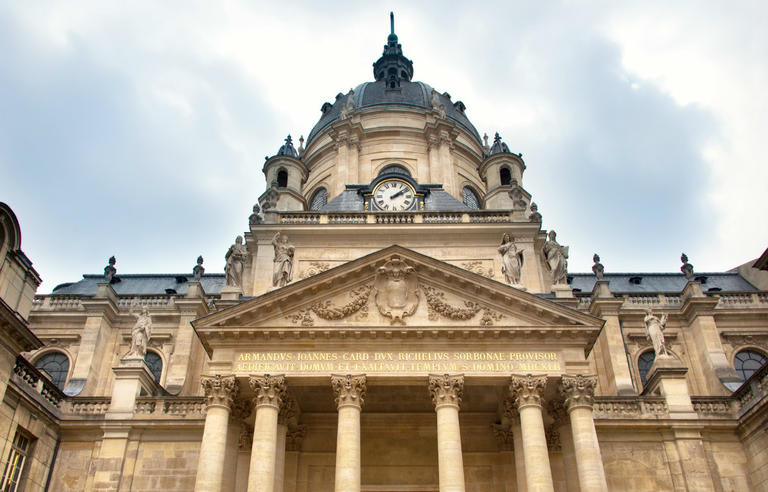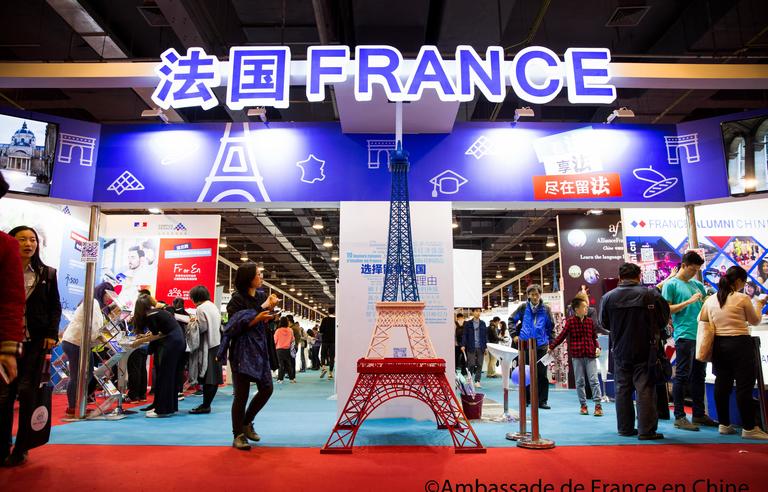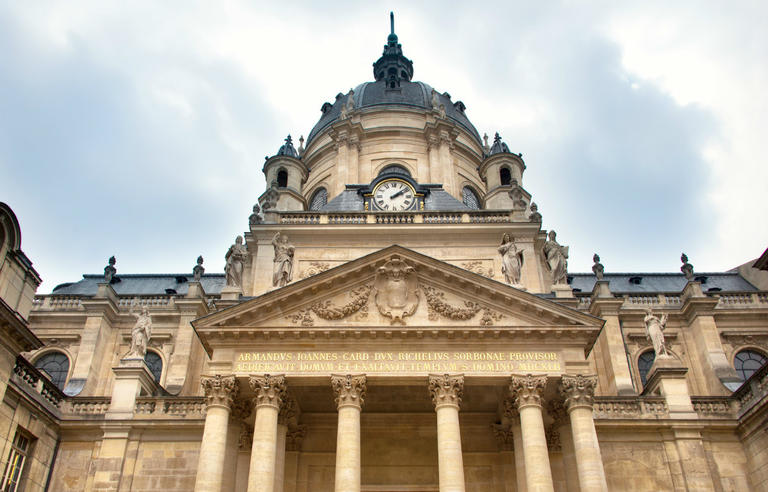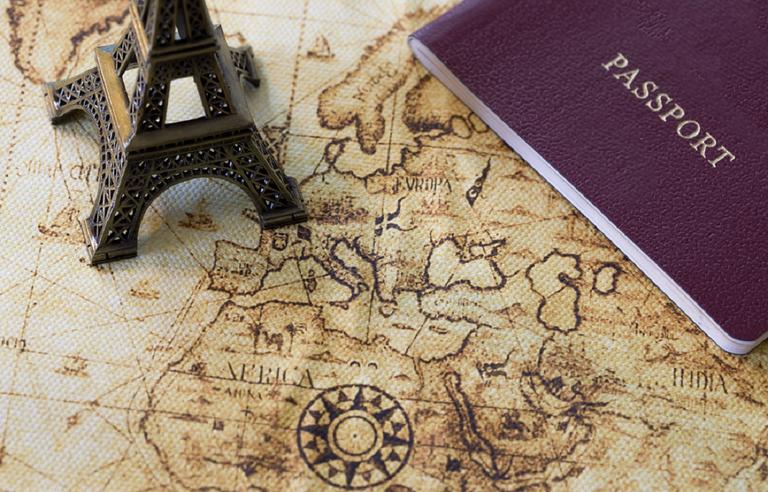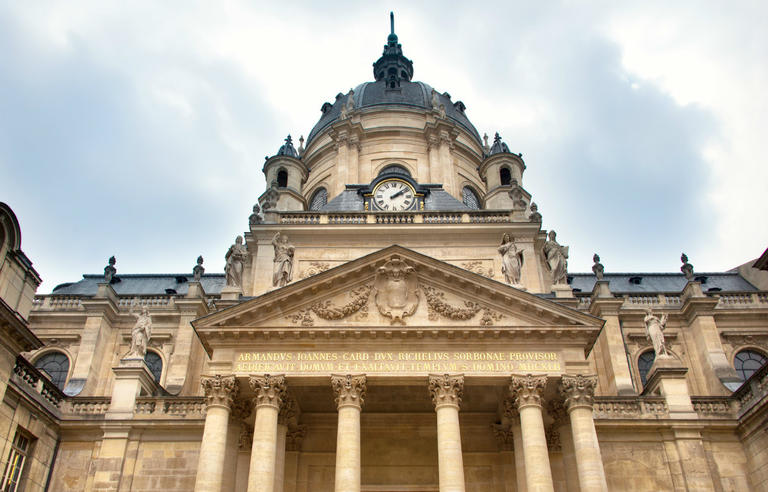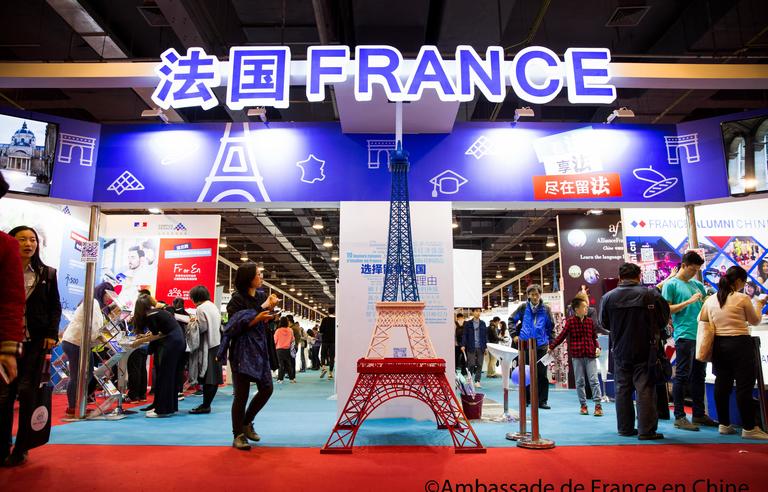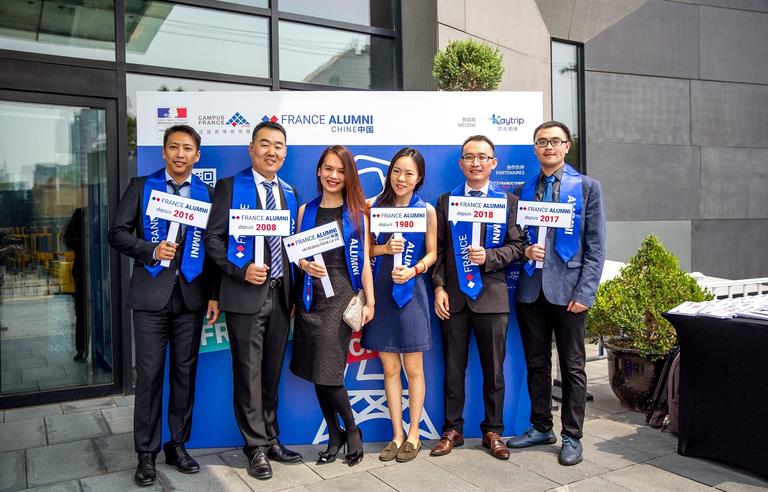The Summer School will last 3 weeks, starting on Thursday, July 2nd, and ending on Wednesday, July 22nd. It will take place in two locations.
First in Marseille, at CPPM, research laboratory from University of Aix-Marseille (AMU - http://www.univ-amu.fr) and CNRS, then in Lyon at IP2I, research laboratory from University of Lyon (UDL - http://www.universite-lyon.fr) and CNRS.
The school's theme is the physics of the two infinites and covers: particle physics, hadronic physics, nuclear physics, high energy astrophysics and cosmology. These research fields will be addressed through: presentations of our current understanding, questions and scientific issues; presentations of some of the major experiments in which our laboratories are involved; mini research projects. This school is also part of the Franco-Chinese collaboration of the LIA FCPPL.
The web sites of the 2019 Edition of the School can be reached at:
https://indico.in2p3.fr/event/18335/ (CPPM) and https://indico.in2p3.fr/event/19252/ (IP2I).
1 - FACILITIES
ARRIVAL IN FRANCE
Members of the “Science Accueil” association will welcome the students at Charles-de-Gaulle Airport (CDG) in Paris on Thursday 02 July 2020. They will help them get on the fast train (TGV) from CDG to Marseille where members of CPPM will be waiting for them with a shuttle bus to drive them to the AMU Luminy Campus where accommodation and dinner will be prepared for them.
Courses will start on Friday 03 July 2020.
ACCOMODATION
In Marseille:
Student accommodation will be provided by the CROUS Cité-Universitaire on the AMU Luminy Campus with the following services: room of 10m2 with three-function cabin (washbasin, shower, WC), weekly cleaning, internet connection, bed linen, hygiene kit (floor mat, towel, hangers,...). The Cité-U is very close to the CPPM building where the courses and pedagogical activities of the school will take place.
In Lyon:
The students will be hosted in the University residence of Monod-Puis de Chavannes which is located on the main entrance of the Doua Campus at 500 m from the IPNL where the lectures will take place. Each student will have his individual flat that include all the commodities.
MEALS
In Marseille:
- Breakfast: they will all be taken by the students at the CROUS restaurant close to CPPM building.
- Lunches: on working days, they will be taken at the SOGERES administrative restaurant in front of the CPPM building. On Saturday, lunch trays will be ordered for students and supervisors. The day devoted to cultural activities (Sunday 5 July), lunch baskets will be ordered for students and supervisors.
- Dinners: There is no restauration on Luminy Campus in the evening; we will plan catering for dinner every day, except on Fri 3, Sun 5, and Tue 7, and Thu 9 July when dinners will be organized in restaurants.
Coffee/tea breaks will also be provided every day in the middle of the mornings and afternoons.
In Lyon:
The lunch meals will be taken in the Domus restaurant on the campus in working days. This restaurant offers the best Lyon specialties that are very much appreciated by foreign hosts. On Saturday July 18 lunch baskets will be provided during the cultural visit.
During period from 12th to 22nd of July no breakfast or dinner could be served in university restaurants. A catering will be organized to provide the breakfast and dinner meals except for the three evenings of July 12, 15 and 18 where dinner will be taken in the city.
TRANSPORTATION
The transportation costs from Paris CDG Airport to Marseille (TGV train), in Marseille (RTM buses/subway), from Marseille to Lyon (TGV train), in Lyon (TCL trams), from Lyon to CDG (TGV train) for the students will all be taken care of by the school.
In Marseille:
- The students will arrive in Marseille by train from Paris Charles de Gaulle (Roissy) on July 2nd. A private bus will drive the students from Marseille train station to Luminy campus; at the end of their stay (Sun Jul 12th morning), a private bus will drive the students to Marseille train station for them to take their train to Lyon.
- The vast majority of the activities will be located on Luminy Campus. Occasional trips in the city will be made by public transportation (bus and subway - RTM).
- On Sunday July 5th afternoon, the students will take a boat to visit the Calanques. The tickets will be provided by the school.
In Lyon:
Bus tickets will be provided to students upon their arrival to the Part Dieu train station so they can take the bus to their residence but also for their departure from Lyon on 22nd of July.
RETURN TO CHINA
At the end of the school, early morning on Wednesday 22 July 2020, the students will be accompanied by members of IP2I to the Lyon Part Dieu train station to take their train (TGV) to CDG Airport to take their plane to fly back to China.
2 - SCIENTIFIC SYLLABUS
LECTURES
In Marseille:
Particle Physics at the Energy Frontier
Introduction – by Y. Coadou
Particle physics describes at the most fundamental level the elementary blocks that make up the world around us. These particles, with no known internal structure at the 10-18 m scale, and their interactions are described by the Standard Model of Particle Physics, which is based on quantum mechanics and special relativity. The way in which it has been constructed, with a strong interaction between experimenters and theorists, as well as its various components (and in particular the Higgs boson) will be presented, as well as its experimental validation over time.
The ATLAS experiment – by S. Muanza
ATLAS is one of four major experiments at the LHC (Large Hadron Collider) at CERN. After a brief presentation of CERN and the LHC acceleration chain, the focus will be on the sub-detectors of this cathedral of technology and on exploiting the enormous amounts of data collected since 2009. Various results obtained thanks to the technical, algorithmic and software developments of the group will be presented, as well as their impact on the precise measurements of the predictions of the standard model, the discovery of the Higgs boson and the search for signs of new physics.
Flavor Physics
Flavor Physics with the LHCb experiment - by J. Cogan
LHCb is an experiment running at the LHC. It is dedicated to the search for rare decays and the study of matter-antimatter symmetry using hadrons containing heavy quarks. By performing precision measurements in this highly phenomenologically rich area, the LHCb collaboration seeks to evidence processes beyond the Standard Model of Particle Physics. This course will introduce the LHCb experiment and present its recent results, some of which might be the first signs of a new physics.
Neutrino Physics
Double beta decays and the nature of the neutrino – by J. Busto
After presenting a brief overview of the Dirac equation and introducing the theory of simple beta decay, we will move on to the description of the process of double beta decay (bb) and show the link with the Dirac or Majorana nature of the neutrino. We will then discuss the experimental characteristics in the search for (bb) decays and present a review of the main techniques proposed in this context. The course will continue with a brief presentation of the problem of very low radioactivity and will conclude with a description of the main experiments with the results they obtained and the perspectives for the future.
Astroparticules
Introduction to astroparticle physics – by D. Dornic
After having presented the cosmic rays and their characteristics, we will introduce the nature of the astrophysical sources that are supposed to produce them in the Universe. The mechanisms of their production and acceleration in the sources will be analyzed and the propagation of these messengers in the interstellar medium to Earth will be described.
Cosmic Ray detection – by H. Costantini
We will begin with a historical introduction of cosmic ray detection to describe the different messengers that can be used such as charged particles, high energy photons and neutrinos. The different detection techniques in space and on Earth will then be described and a review of the main experiments will be presented.
CTA – by H. Costantini
CTA is an array of Cherenkov imaging gamma ray telescopes that will be built in Chile and on the island of La Palma in Spain. CTA will be dedicated to the study of the most violent and energetic phenomena in our Universe such as the explosions of SuperNovae and black hole neighborhoods which are potential sources for the production of cosmic rays at very high energies. After a description of the detection technique and of the experiment, we will show CTA's potential in the field of astroparticle physics. We will also discuss the activities in which CPPM is involved and research prospects for the coming years.
KM3NeT: ARCA and ORCA – by V. Bertin and M. Lincetto
KM3NeT is a neutrino observatory under construction in the depths of the Mediterranean Sea at two sites: in Sicily in Italy (ARCA at -3500m) and off Toulon in France (ORCA at -2500m). The purpose of the KM3NeT-ARCA detector is to detect high energy neutrinos from astrophysical sources. As for ORCA, it is optimized for the detection of lower energy neutrinos and will be dedicated to the study of the fundamental properties of neutrinos such as the determination of the mass hierarchy of neutrinos. Neutrino detection techniques with an underwater detector will be presented and the focus will be on the technological challenges of building such a detector at the bottom of the sea. The activities in which the CPPM is involved in this project will also be discussed.
Cosmology
Introduction – by W. Gillard
Physical cosmology is a recent scientific field that deals with fundamental questions about the origin, structure, evolution and future of the Universe. The cosmology course will begin with a short introduction to physical cosmology followed by a description of the standard model of our Universe. We will present the fundamental equations that describe its evolution and study the impact of its contents on its evolution before tackling the problem of the accelerated expansion of the Universe. This course will be followed by specialized courses that will present different methods used to measure the properties of our Universe.
Standard candle – by D. Fouchez
One of the main remaining questions in physical cosmology is the measurement of cosmological distances. In this course, the use of supernovae in cosmology will be described. We will discuss the observation of supernovae and the methods used to infer cosmological parameters from their observation. We will conclude this course by describing the CPPM's involvement in the future LSST cosmological survey, which will considerably increase sensitivity in the detection of supernovae, thus measuring the fundamental properties of our Universe.
Standard ruler – by S. Escoffier
This course will present another cosmological probe, the baryonic acoustic oscillations, which are considered as a standard ruler for the Universe. After a short introduction to the physical nature of baryonic acoustic oscillations, observation methods used to measure their signatures will be described. We will conclude this course by describing the CPPM's involvement in future cosmological surveys, LSST and EUCLID, which will provide new and unprecedented accuracy in the measurement of baryonic acoustic oscillations.
Cosmic voids – by M. Aubert
This course will present a new and promising probe for physical cosmology: cosmic voids. After an introduction to these voids, we will present how they can be used to study the structure and evolution of the Universe.
In Lyon :
Nuclear Physics
By: D. Guinet, K. Bennaceur, and C. Ducoin
A First lecture will remind the basic concepts of nuclear physics and summarize the research activities in the filed of nuclear physics, This will be followed by a second lecture on the up-to-date knowledge of the unclear interactions and the equation of the nuclear state.
A third lecture will be dedicated to the exciting field of astro-nuclear physics that intends to understand, among others, the reaction taking place inside neutron stars and supernovae.
Hadronic Physics
By B. Cheynis, A. Deandrea and A. Uras
The Quantum Color Dynamic (QCD) theory will be briefly presented with all the enigmas that are still around in one lecture.
The ALICE experiment, one of the 4 LHC experiments at CERN, that tests QCD and the so-called de-confinement leading to quark-gluon plasma will be presented in a second lecture. The upgrade project to enhance the ALICE performance in view of the High-Luminosity LHC phase will be described.
The most recent results and the current understanding of the hot and dense nuclear matter and the future expectations will be given in a third lecture.
Particle Physics
S. Gascon, M. Gouzevitch, G. Cacciapaglia, I. Laktineh
A first lecture will be given on the Standard Model limitations and the need for Beyond the standard model theories. Several lectures will follow:
A second lecture on the CMS experiment, one of the two general LHC experiments, and the upgrade project will be presented. This lecture will review the performance that has been achieved during the two first RUNs of LHC.
A third lecture will be dedicated to Higgs at CMS will be given. This includes the study of the standard Higgs and the search for exotic Higgs.
A forth lecture will be dedicated on the next generation of colliders and their goals. The leptonic and more precisely the e+e- colliders project will be described. The CEPC project and the French-Chinese collaboration on this project will be presented.
Neutrino, astroparticles and cosmology
By D. Autiero, A. Cazes and Y. Copin
There will be a first lecture on the exciting history of neutrino discovery and R&D activities around the world to study this strange particle. The lecture will develop then the concept of the Dune project to take place in the coming years and the different challenges it will face.
A second lecture will present the concepts of dark matter and the status of the searches. It will then focus on the direct search techniques. Edelweiss experiments to which participate actively the IP2I will be detailed and the prospects of such searches will be given.
The Third lecture will be dedicated to the dark energy. The experimental tools currently used to investigate this mysterious energy will be explained and the future experiments and their challenges will be presented. The EUCLID survey to which participates IP2I will be also presented.
OTHER SCIENTIFIC ACTIVITIES
VISITS of LAboratories
Visits of CPPM and IP2I laboratories are scheduled during the school on each corresponding site.
ConfErences
In Marseille:
Societal applications of particle physics in the field of imaging - by Ch. Morel
The use of positron-emitting isotopes for the localization of brain tumors had been postulated by Wrenn et al. in the journal “Science” in 1951. Since the construction of the Brookhaven "Hair Dryer" in the 1960s and the development of X-ray tomography (CT) in the 1970s, detector development and signal processing have made continuous progress to improve the quality and accuracy of medical images. The basics of tomography will be presented, from the detection of ionizing radiation to image reconstruction. The current challenges of imaging will be discussed both from an instrumentation perspective and from the point of view of applications in various fields.
Machine Learning – by Y. Coadou
In their quest for precision measurements and the search for new rare phenomena, physicists analyze phenomenal amounts of data. To make the most of them, automatic learning techniques such as artificial neural networks or decision trees have been developed for several decades and are increasingly used in physics. The field has undergone a renaissance in recent years with the emergence of deep learning, which has revolutionized many disciplines related to artificial intelligence. Different techniques and results of their use in particle physics will be presented.
The future of particle physics – by S. Muanza
This talk will present the future of high energy physics. Since the standard model can only partially account for 5% of the universe's content, many models beyond the standard model have been proposed to improve our understanding. After an overview of these ideas, the research perspectives of this new physics will be discussed in the context of current research at the LHC, planned improvements to the LHC experiments and future collider projects currently under consideration.
In Lyon:
Several seminars will accompany the lectures:
Hadron Therapy - by E. Testa
The talk will review the different ways of using particle beams to cure Cancer tumors. It will then focus on the advantages of using hadron beams (proton, Carbon) for some kinds of Cancers for which other treatments are difficult to be used. The connection between the subatomic world and hadron therapy techniques will be discussed and the activities on hadron therapy at the IP2I will be presented.
Discovery of Laniakea - by H. Courtois
The talks will review the tools used the structure of the cosmos and the wonderful saga that led to the discovery of one of the biggest cosmological structure of our Universe.
Saga of Quantum Mechanics - by I. Laktineh
The history of Quantum mechanics is exciting. The first concepts and the fight of the first pioneers to explain their point of views will be exposed. The different interpretations of the Quantum Mechanics will be explained. The paradoxes of the Q.M and the techniques using the concept of Q.M. will be presented.
MINI-Research projects
In Marseille as well as in Lyon, 8 hours will be devoted (on each site) to work on mini-research projects. These projects will be an opportunity for students to put into practice what they have learned during the lectures. After these 8 hours of personal work (working in pairs) on their project, students will spend 3 to 4 hours on the preparation of a report about their results and of its oral presentation. These presentations will be given in front of the other Chinese students and local teachers and supervisors. Students are advised to bring a laptop personal computer with them for use during the mini-projects and to prepare the presentation they will have to make of their studies and results.
In Marseille: the mini-projects proposed to the students will be on the themes of particle physics (supervised by Y. Coadou, A. Dumitriu, and J. Cogan) and astroparticle physics (supervised by H. Costantini and W. Gillard)
- Like the LHC physicists, students will have to analyze data recently collected by the ATLAS and LHCb experiments. Using specialized software, they will perform a series of measurements allowing them to experimentally rediscover the Standard Model of Particle Physics and see what the first signs of new physics beyond this model might look like. This software will be supplied to them on a USB stick (which they will be able to take with them) in the form of a virtual machine that they can run on their laptop (preferred solution); if the students do not have a personal computer, then we will use a computer lab of the UFR Science.
- Detection of hadronic showers produced by cosmic rays in the Earth's atmosphere using data collected using the ePERON platform developed at the observatory of the Pic du Midi by us for training in the study of cosmic rays. (https://www.labexocevu.univ-amu.fr/?q=fr/content/e-péron).
In Lyon: research mini-projects will be proposed in Experimental Particle and Nuclear Physics, as well on detection as on data analysis aspects. The students could select two of them. Here are three of those mini-projects but others are being discussed and will be presented later:
- RPC detector construction - by ILC team
The construction of a Resistive Plate Chamber (RPC) detector in a laboratory located at IP2I and the tests to validate the construction followed by tests on a cosmic bench to study the performance of the detector using the whole chain of electronic readout.
- GEANT4 - by O. Stezowski
The famous simulation tools commonly used in the subatomic field will be presented and hands-on sessions to use it to simulate a small experiment will be organized in a special room of the IP2I equipped with qualified computers
- Dark matter analysis – by A. Cazes
A presentation of the analyses tools used in Edelweiss experiment followed by analysis sessions where the students could experience themselves how to address some of the problems encountered by researchers and try to fix them.
3- CULTURAL SYLLABUS
French courses for foreigners (FLE)
In Marseille
Course Format
The French courses will be organized and given by the SUFLE - Service Universitaire de Français Langue Etrangère - of Aix-Marseille University, which has extensive experience in this type of exercise.
Course duration
11 hours spread over the stay in Marseille (one 2hr-class and six 90’ classes)
Course location
At CPPM on Luminy Campus.
Course duration
11 hours
In Lyon
AS for Marseille 11 hours of French courses will be organized by the “Service Commun d’Enseignement des Langues (SCEL).
Course location
The lectures will take place on the Doua Campus as for the lectures.
Course duration
11 hours
Cultural activities and social events
In Marseille
Personalized visits accompanied by some CPPM members.
Dates, sites, and logistics
- On Friday 3 July late afternoon, it is planned for the students to enjoy the Mediterranean See at a beach close to a restaurant where we will have dinner afterwards. Students should pack a swimming suit in their luggage.
- On Sunday 5 July:
Morning – Visit of downtown Marseille
Afternoon - Visit of the Calanques by boat
OR
All day – visit the lavender fields in Valensole and surroundings
In Lyon
- On Wednesday 15 July
There will be a visit of the old Saint Jean and the traboules of Lyon in the after-noon of Wednesday 15th of July followed by a boat trip to visit the Rhone- Saone rivers encounter in south of Lyon followed by a diner in the city.
- On Saturday 18 July
A visit to the Beaujolais region and its wine cellars will be organized on Saturday 18th with a lunch taken in one of the region restaurants. This will allow the Chinese students to see the third river of the Lyon region as called by Lyon inhabitants (the wine river).
4- RESUME
NAME OF THE SCHOOL: Physics of the 2 infinities
Students will be welcome on Thursday July 2nd at Paris Charles de Gaulle Airport
It will be held:
From 02 July to 12 July 2020 at Aix-Marseille University (CPPM)
From 12 July to 22 July 2020 at University of Lyon (IP2I)
The total number of places is limited to 25.
Price: 23 000 RMB
The price does not include the trip from China to Paris.
Accommodation, meals and local transportation are all included.
The summer school will deliver to the students a Certificate of Achievement.
The summer school is open to advanced bachelor or master students.
PRICE (NOT INCLUDING CAMPUS-FRANCE COSTS):
To apply, please follow the application procedure described on the main page
